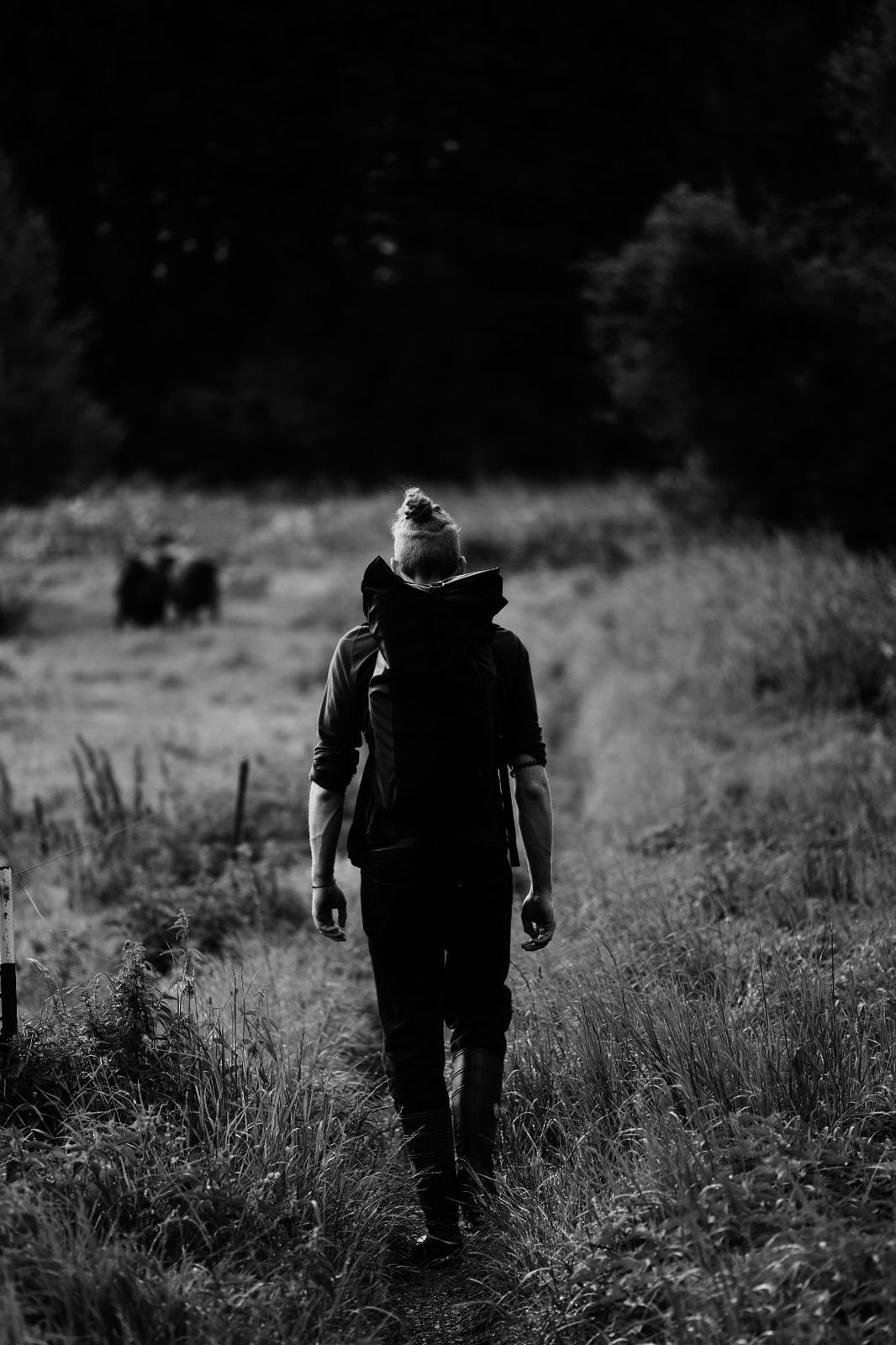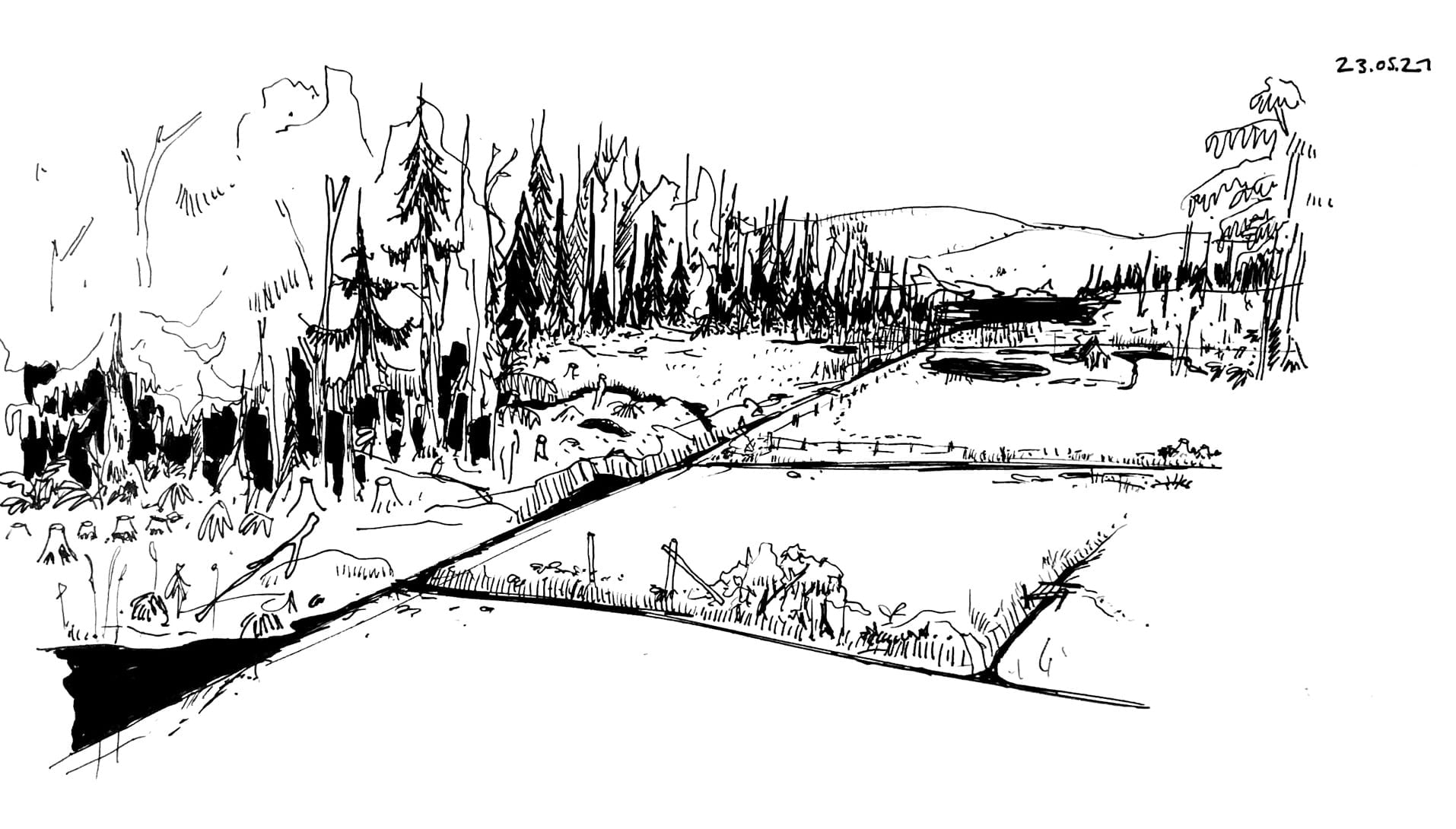
A Foray into the Bog
We approach the bog from a distance. From our current position, we can not yet distinguish it from the surrounding landscape. First, it appears as an ordinary forest land scattered by meadows, which gently stretch in the valley plain. First recognizable only as thin rows of trees on the horizon, it is not yet foreseeable that we will leave the familiar ground of the mineral earth and climb on an organic hump of an ancient being sleeping between the hills. The signs that we are leaving familiar terrain and entering a different aggregate of landscape are, except for a few black ditches and ponds, initially less visually perceptible but more subtle, occurring in sensing the landscape. At first, we notice a slight change in the smell, which slowly mixes into the typical odours of forest and blooming meadow. Somewhat musty and old but still in a way subconsciously familiar in the depth of our minds, and at the same time strangely fresh and vital – perhaps like a reverse decomposition? We begin to suspect that other laws of decay and growth and especially their temporal periods apply here. Another change we can experience with our feet: A short while ago, we could hear the sound of our crushing steps on the gravel path, but now our walking noises suddenly seem to be damped, and the ground begins to bounce slightly under each step. The broad gravel road has slowly turned into a narrow trail leading into the forest, framed by mosses and undergrowth, and we have to strain to follow it. Whereas before, we could still observe the impressive flat expanse and monotony of the cultivated fields and meadows, now the topography seems to have shifted to a finer resolution and appears as a miniature landscape with small hills and heaps, ditches and pits, water basins and muddy shores. Especially the geometric shapes, alignments and sharp edges reveal to us that this diverse topography is not the mere product of geologic and vegetative processes but rather indicates a history of deep-reaching man-made intervention. The history of extraction and landscape transformation can be read everywhere in the European cultural landscape, but in the bog in particular, we can observe the deep entanglement of primordial natural forces and anthropogenic colonization efforts as here the front lines of such opposing tendencies and confrontations come to light.

Now we should also ask ourselves why the moor seems to magically attract us and yet, at the same time, eludes our laws and ideas of landscape and sometimes evokes a feeling of trepidation, seemingly trying to prevent our intrusion through its characteristic impassibility. How can such a place create and maintain its own atmosphere (both physical as well as emotional), which is sometimes so different from the surroundings that you feel you are in another world, or at least time? How is it related to the ground from which it once arose, and what are the mysteries of its origin? Entering the bog walking from the surrounding meadows and roads, the conditions gradually change and require a different perception for the intruder. First, it is noticeable that the solid ground increasingly dissolves, giving way to a springy and viscous mass. What appears to be normal forest soil can suddenly become an overgrown lake, and many areas remain inaccessible. Other atmospheric parameters are light and sound. Due to the high humidity in the soil, the bog produces its own fog halo, which creeps over the landscape in the early morning hours like a floating creature of white clouds. Sunlight is refracted or reflected in countless points of light in the pitch-black pools, streams and fine water droplets on every plant. Due to these sensory illusions and the lack of topographical landmarks, one loses orientation after a short time and feels the immersive attraction of this primaeval world. Also, the auditive perception differs from the environment. The spongy floor acts as a diffuser where footsteps are bounced, and voices and sounds are difficult to assign to a specific direction. A soft gurgling and splashing sound tell us that the ground around us is largely constructed by water, and we must always be careful where we step. When we continue to cross the Ried, we will observe constantly changing ecosystems and bog typologies, which gives one the impression that we wander through a sequence of rooms and places that bear their own milieus and realities. But before we continue our foray, we should sit down on a mossy trunk, take a look into the Atlas, and immerse ourselves into the deep history strata we are located on…


